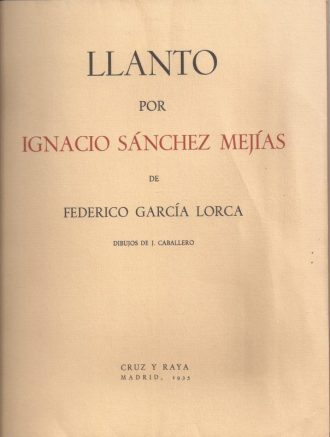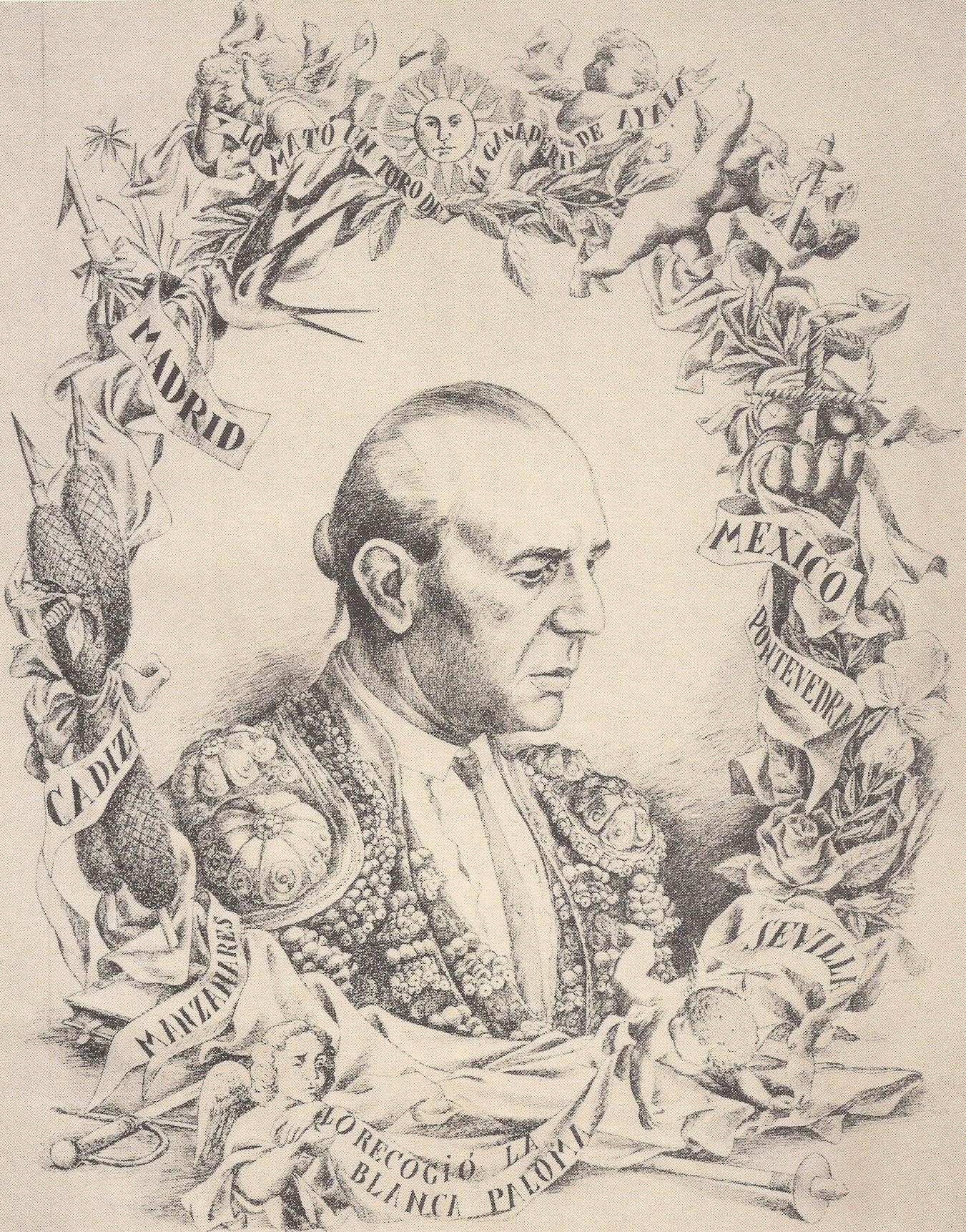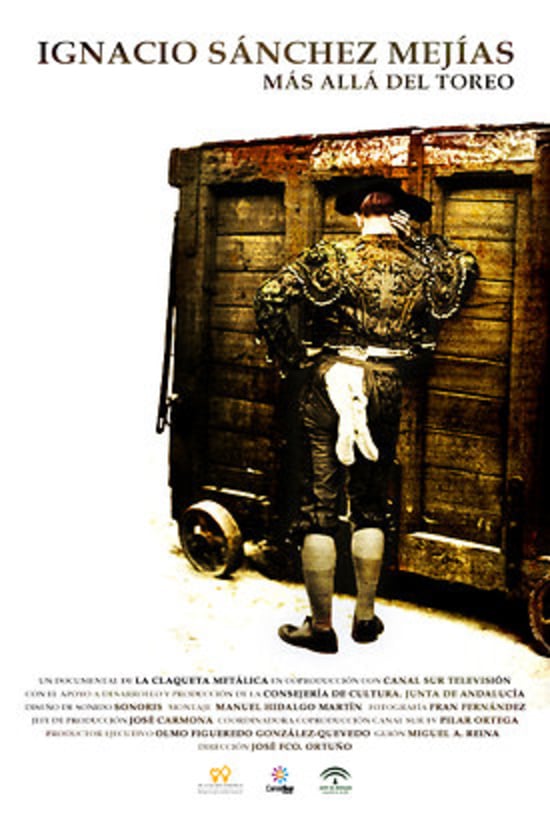
Lament for a Bullfighter (Llanto por Ignacio Sánchez Mejías) is an elegy composed by four parts: The Goring and Death, Blood Spilt, The Body Lying Prone and Absent Soul inspired by the death of his friend the bullfighter Ignacio Sánchez Mejías (Seville, June 6, 1891-Madrid, August 13, 1934).
In it, the popular, the cultured, the autobiographical and the lyrical, the romance, the Alexandrine, the rhythm of the soleá, the fatality, the possible omen of his own death appear harmoniously…
The cry before being gored, death and the absence of his friend give rise to a secular elegy considered one of the best in Spanish literature of all time. The first reading of the book of poems was made by Federico García Lorca on November 4, 1934 at the home of his friend Carlos Morla Lynch.
The only edition during the author’s lifetime appeared in 1935 in the Cruz y Raya and Ediciones del Árbol publishing houses. José Bergamín, director of the magazine between 1933 and 1936, gave in to Lorca’s insistence that the illustrations be done by José Caballero (Huelva, 1913-Madrid, 1991), who worked on them following some of Lorca’s indications (“Your drawings are true tempests of calm cloths”, Lorca wrote to him). Both artists had planned to make a mural in the summer of 1936 in the Huerta de San Vicente (San Vicente Farmhouse), a project that was cut short by the Civil War and the shooting of Federico García Lorca. A single manuscript is preserved, which Lorca gave to José María de Cossío as a gift.
Federico García Lorca met Ignacio Sánchez Mejías on the occasion of the tribute that the Seville Athenaeum dedicated to Góngora. At the bullfighter’s estate, Pino Montano (located on the outskirts of Seville), the participants celebrated those days of poetry and friendship. They also had a friend in common, Encarnación López Júlvez, La Argentinita (Buenos Aires, 1898- Madrid, 1945), the singer and dancer who recorded the popular songs harmonized by Federico García Lorca who also accompanied her on the piano. La Argentinita was the bullfighter’s common-law partner.
Sánchez Mejías was very close to the Generation of ’27. In addition to being a bullfighter, he was a patron of the arts, writer, playwright, lecturer, president of the Red Cross in Seville, president of the Betis soccer team… Sánchez Mejías meant for the poets of ’27 the fascination for bullfighting as a vehicle of artistic expression.
Bullfighting attracted almost all its members, but especially José Bergamín, Rafael Alberti (who also dedicated an elegy to the bullfighter and another, at the request of Sánchez Mejías himself, to the memory of the bullfighter Joselito, who died in Talavera seven years earlier), Jorge Guillén, Pedro Salinas, Gerardo Diego and Federico García Lorca.
In the case of Federico, the following phrase remains: “What would become of the Spanish spring, of our blood and our language, if the dramatic clarions of the bullfight were to cease to sound”. In a statement, a year before his death, he had already said: “Bullfighting is probably the greatest vital poetic wealth of Spain”. The artistic union of the friends had been linked forever.
The death of the bullfighter was the result of a series of fatalities that ended on August 11, in the Manzanares bullring, with the bullfighter being seriously gored by the Granadino bull. His fellow bullfighters, Alfredo Corrochano and Armillita, took it on themselves to finish the bullfight while Sánchez Mejías bled to death in the arena, asking to be transferred to Madrid by ambulance.
José Bergamín, present in the bullring, accompanied him in the ambulance and in his agony. The bullfighter died on the morning of August 13. Lorca, who was traveling with the company La Barraca, was told of the bullfighter’s state of health by telephone. He did not want to go to Madrid, he did not want to see the blood or the agony. He surrendered to fatality, bad omens and admiration for his friend: “Tardará mucho tiempo en nacer, si es que nace [He will take a long time to be born, if he is born,] / un andaluz tan claro, tan rico de aventura. [an Andalusian so clear, so rich in adventure] / Yo canto tu elegancia con palabras que gimen [I sing your elegance with words that grieve] / y recuerdo una brisa por los olivos [and I remember a breeze through the olive trees]”.

In December 2017, a tribute event to Ignacio Sánchez Mejías and the Generation of ’27 was organized. The Extremaduran bullfighter Miguel Ángel Perera emulated Sánchez Mejías at the Seville Athenaeum. The air of the 1927 tribute to Góngora was there. The philosopher Fernando Savater, the tenor Plácido Domingo, the poet Carlos Marzal, the musician Javier Perianes, the actor Juan Echanove, different authorities and representatives of Spanish society participated. The event, as in December 1927, ended with a party at the estate that belonged to Ignacio Sánchez Mejías, Pino Montano (Seville).
Alfredo Corrochano, the bullfighter who was part of the line-up and who stabbed Granadino after the fatal gore, told the story in an interview in El País on April 11, 2000: “The gore was… foolishly. The bull was not bad. When he took the sword and the muleta he went to take a pass in the stirrup. The bull was coming in a little. The banderillero warned him: ‘Be careful, maestro, the bull is pressing in’. He caught him between the boards and pierced his thigh. I “came to his defense”. When they got hold of him, he was dead.
Alfredo, son of the critic Gregorio Corrochano, shared the trip from Madrid, aboard the Expreso de Andalucía, which led to the death of García Lorca in July 1936. “Federico had a feeling that something serious was going to happen to him.” It was not the first time he treated the poet: “In 1934, when Sánchez Mejías returned to the fiesta, I was recovering from a gore and we were doing physical training together, in the countryside. And Federico came. He was a charming man, a great conversationalist, admired by women. We were teasing each other and talking about things. At the last minute we talked about metaphors. Federico laughed a lot at what I said. The next day we went bullfighting. García Lorca accompanied us. I gave the heifer some natural passes and a brush with my feet together and I said: ‘Federico, this is a metaphor’. And he laughed enthusiastically. Alfredo lived the last years of his life in Granada.
